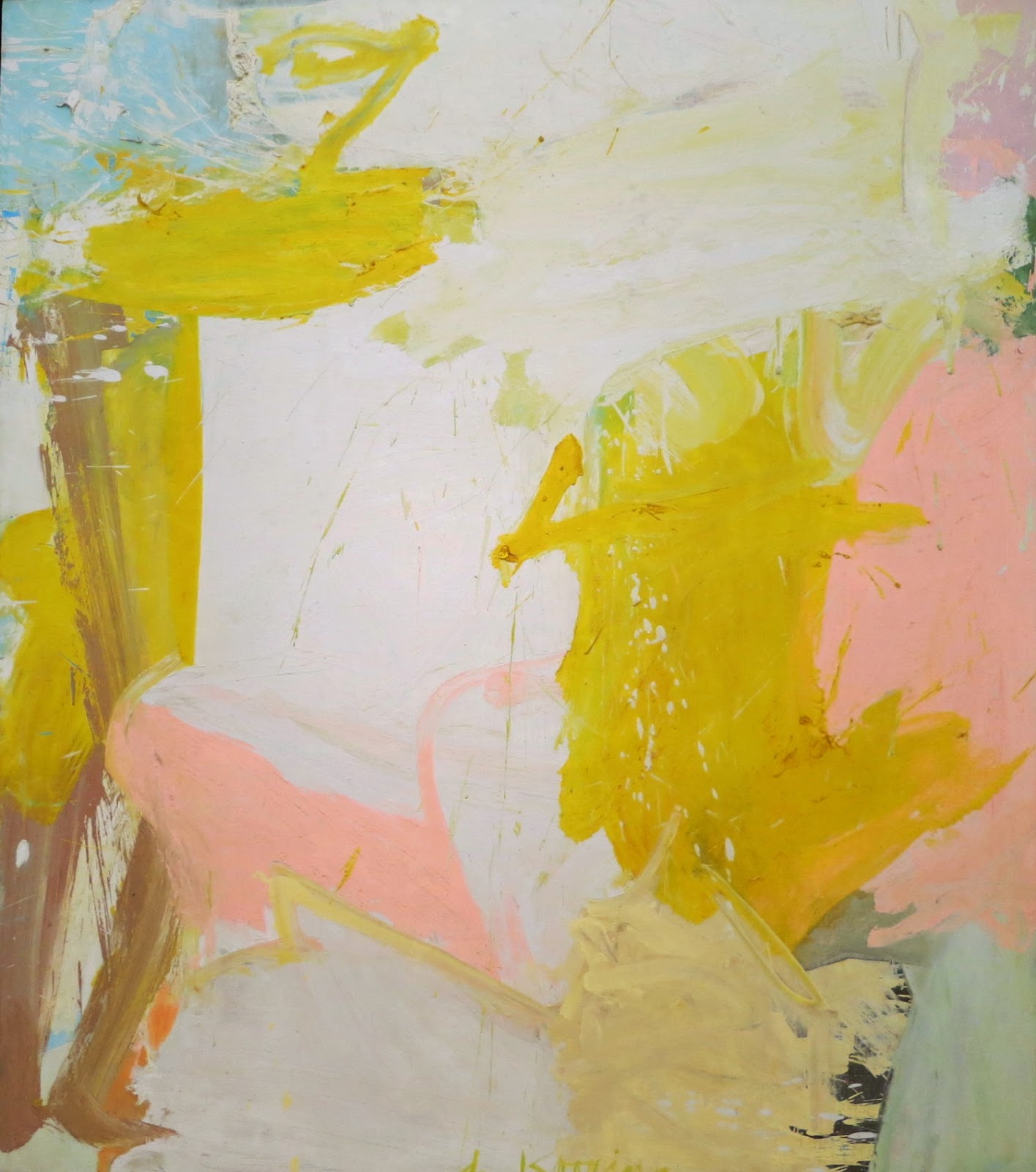The Stedelijk Museum, Amsterdam, Art after 1950, part 2.
Willem de Kooning, Rosy-Fingered Dawn at Louse Point, 1963, (oil on canvas)
Even though this work was painted in his studio, de Kooning has captured the reflections in the water and the movement of the wind with large gestural areas of colour applied with light brushstrokes.
The title is a quotation from the Iliad where Homer describes sunrise as the moment when 'the child of morning, rosy-fingered Dawn, appeared'.
William de Kooning, Two Figures in a Landscape, 1968, (oil on canvas)
One of the leading figures of Abstract Expressionism, de Kooning, like Pollock, was categorised as an action painter: he rapidly applied colour, scraped it off, and reapplied it.
William de Kooning, North Atlantic Light, 1977 (oil on canvas)
William de Kooning, Morning: the Springs, 1983, (oil on canvas)
Felix Gonzales-Torres, Untitled (A Love Meal), 1992, (light bulbs, porcelain light sockets and extension cord)
Richard Serra, Blank, 1978, (paintstick on canvas)
looking closer
Yves Klein, L'Accord Bleu, 1960, (oil, sponges, small stones, paint)
With pigment applied directly to the canvas without first being diluted, this monochrome painting depicts the expanse of infinite space. Sponges have been fixed on the surface of the canvas to saturate the work in pigment.
Jean Tinguely, Metamatic no. 10, 1959
Arman, Couleur Tracante (Colour Tracing) , 1967, (oil paint, paint tubes, acrylic resin, Perspex)
Jean Tinguely, Element Detache III, 1954
Due to fragile components the Tinguely artworks were not in working order, but we could see video clips.
Cindy Sherman, Untitled Film Still #54, 1980.
Jasper Johns, Untitled, 1964-65, (oil, broom and rulers on canvas)

Lee Bontecou, Untitled, 1961 (steel, canvas, velours, leather, copper, wire, wool, soot, paint)
a side view
Robert Rauschenberg, Charlene, 1954, (assemblage on softboard)
A link between Abstract Expressionism and Pop Art, this is one of Rauschenberg's best-known 'combine paintings': an abstract composition where mundane objects from everyday life have been inserted: a parasol, a light fixture, a mirror, newspaper clippings, a letter from the artist's mother.


















No comments:
Post a Comment